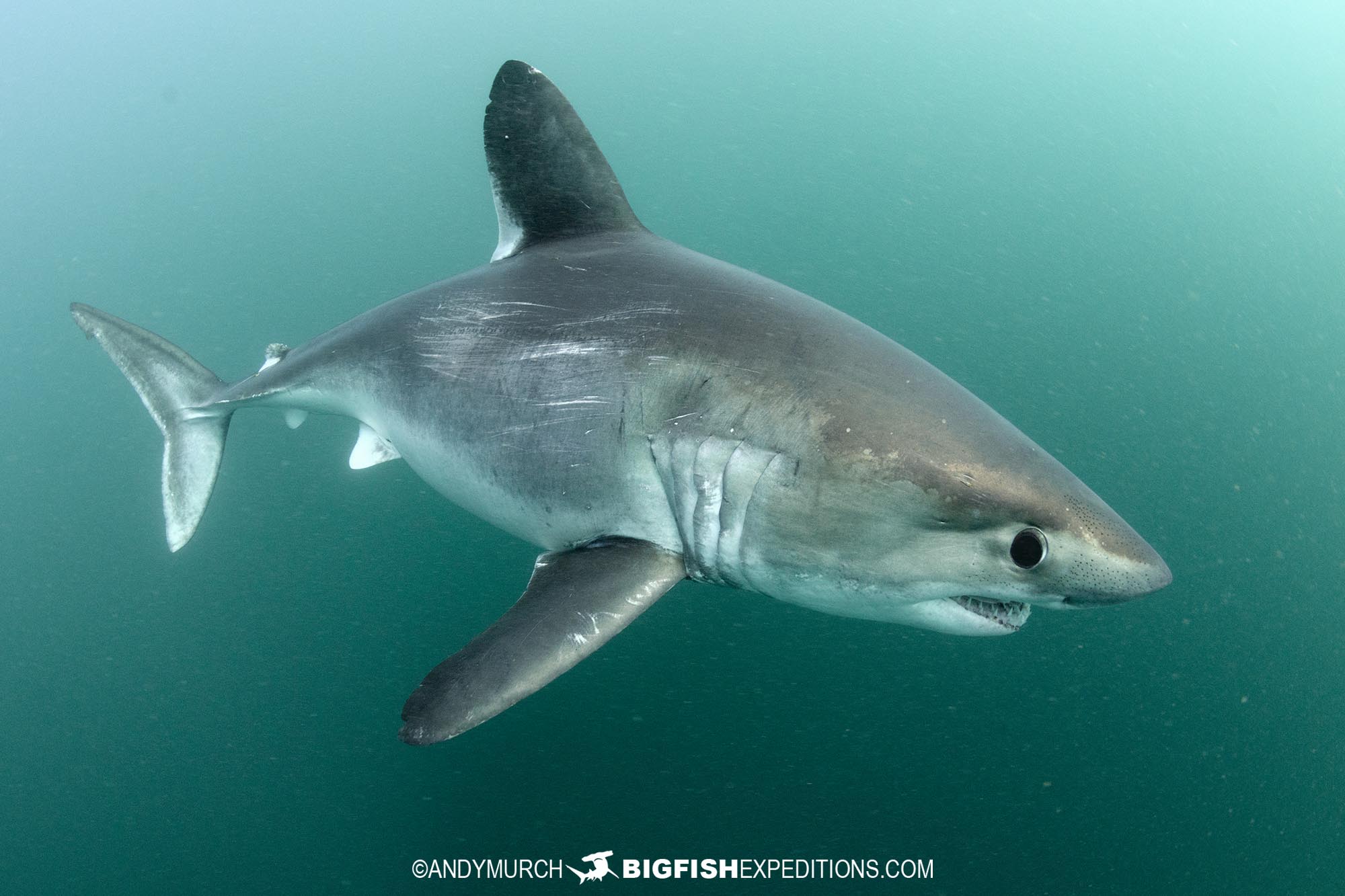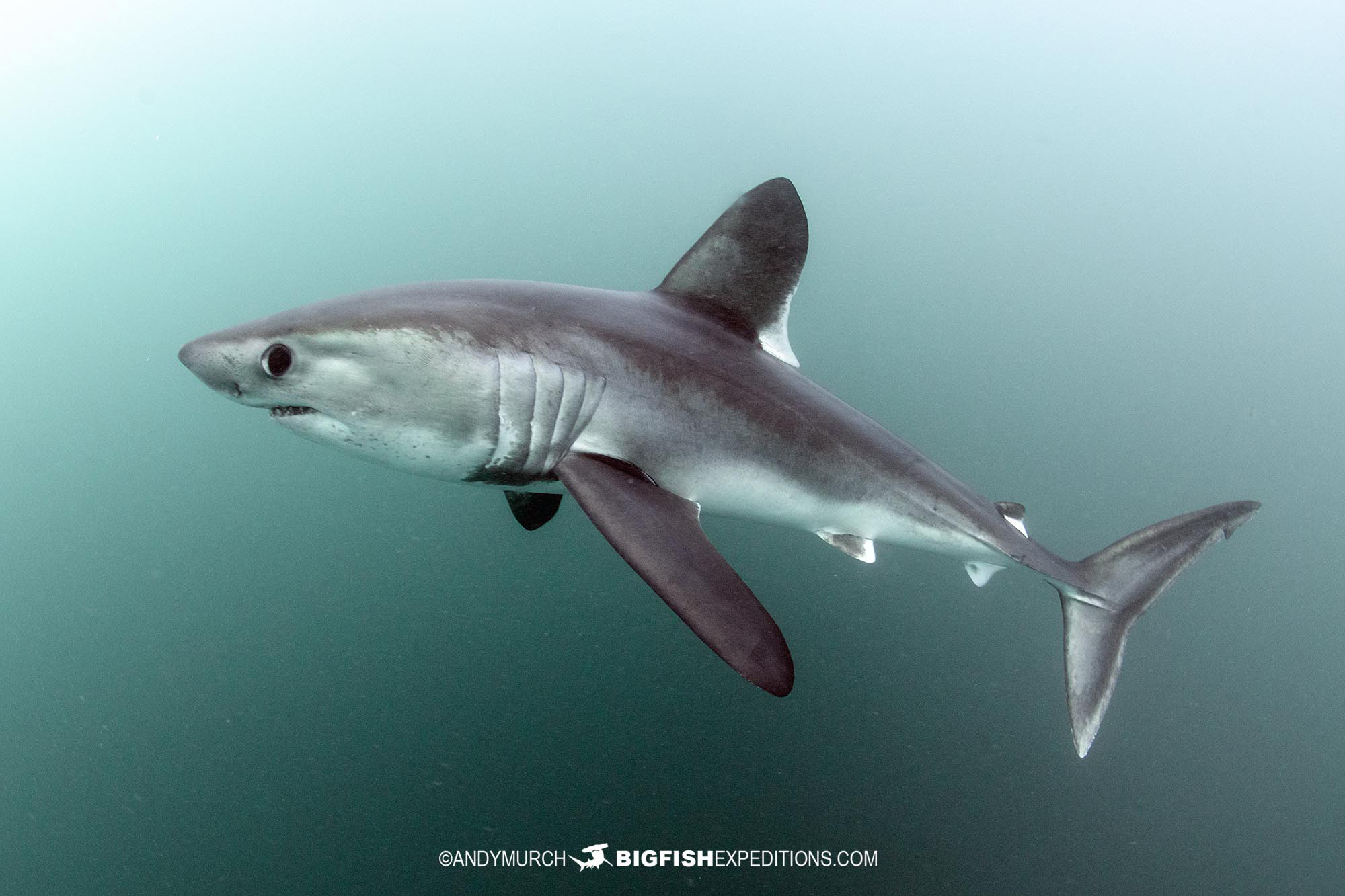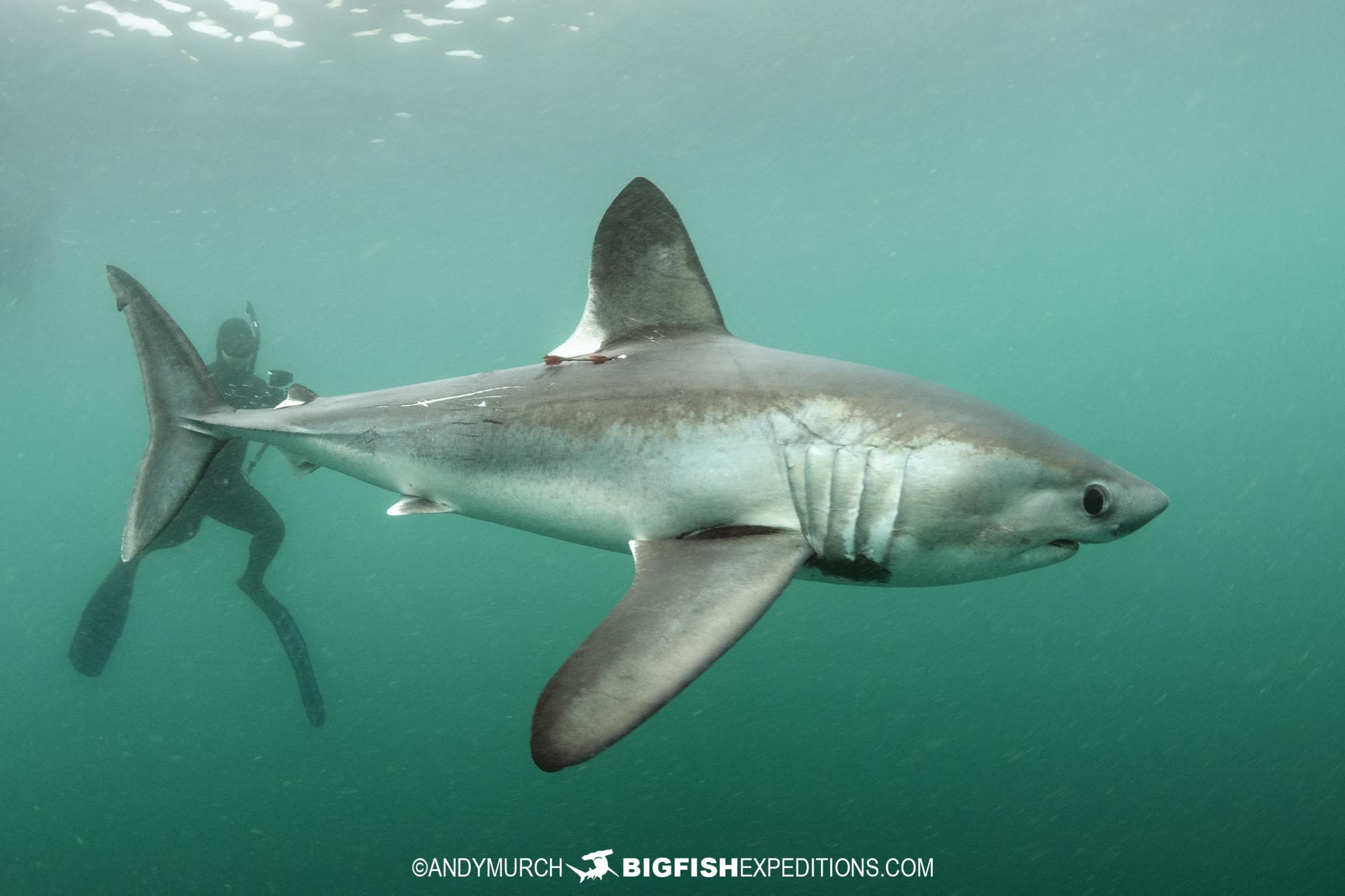
Five days of Snorkeling with Porbeagle Sharks
Our first Porbeagle Expedition went way beyond our expectations! We knew that the researchers we were accompanying had a pretty good track record for attracting porbeagles so I figured we might see one or two during the week if all went well. What I did not expect was close encounters with multiple porbeagles every single day!
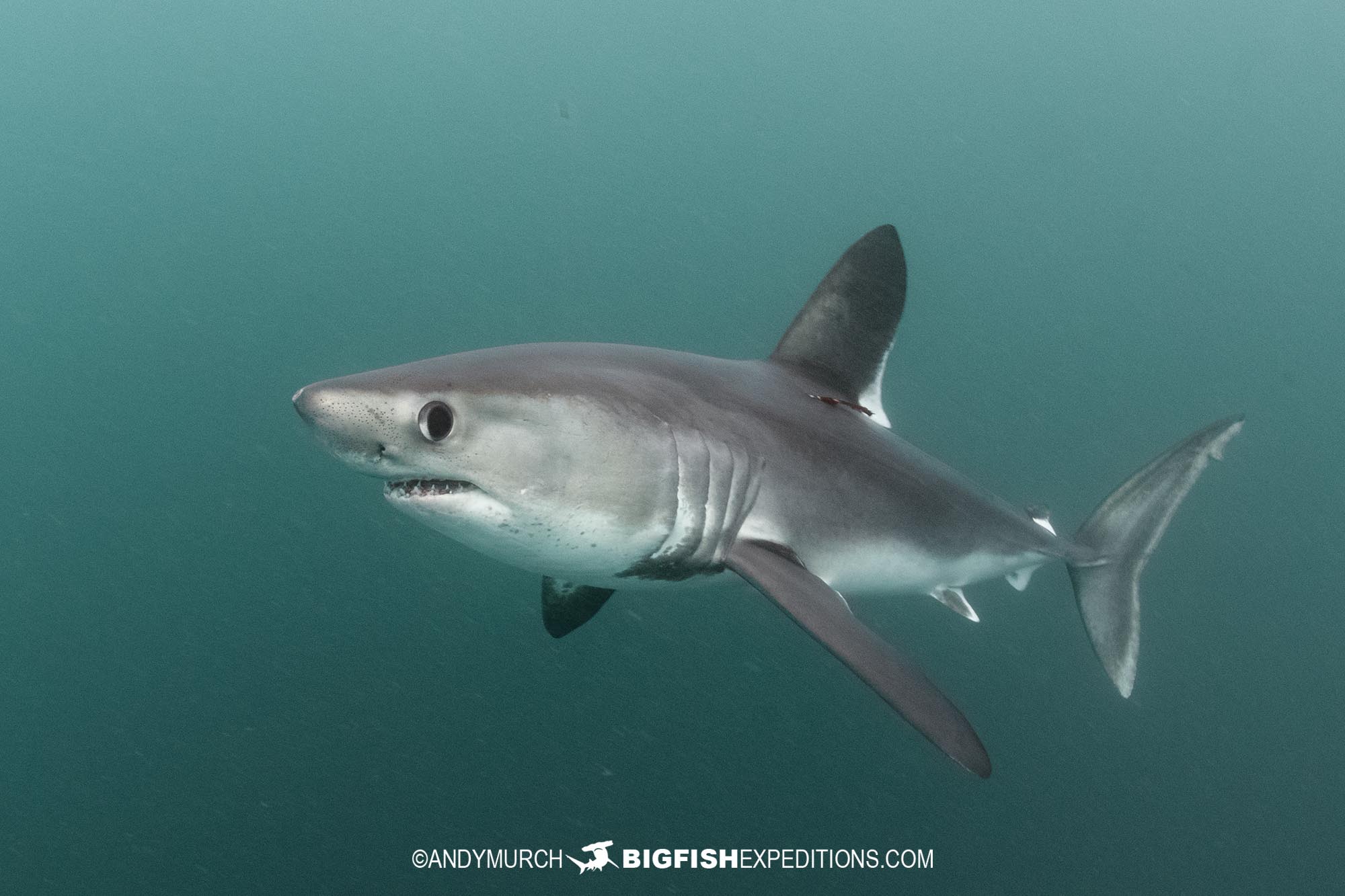
Epic Porbeagle Encounters from Day 1
Our first day was fantastic. We went to sea for 4hrs and saw four (or maybe five) porbeagles. It took less than an hour each day to get the first shark and once they arrived, most sharks stayed between 5-20 minutes.
Their behavior was surprisingly bold, making close passes and circling the snorkelers, then disappearing into the fog, only to reappear a minute or so later.
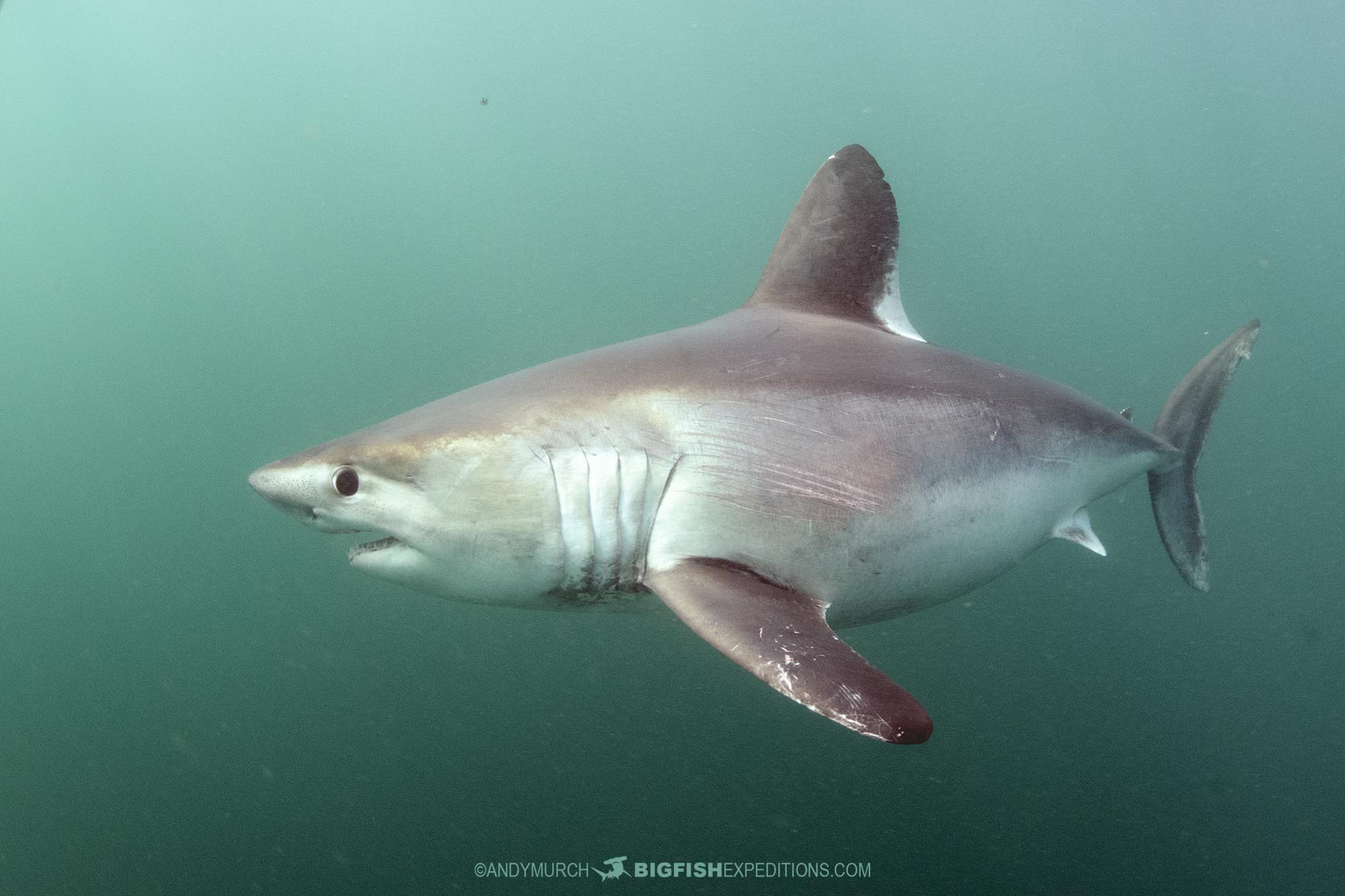
French Catsharks
The porbeagle encounters were tide dependent, so we would break for lunch and then return to sea to dive on Brittany’s rocky reefs in search of catsharks, rays, and other marinelife. There are two species of catsharks that you can see in Brittany; the smallspotted catshark and the nursehound. We did not run into any catsharks on our first dive, but we know they visit the area because we found a cluster of nursehound shark egg cases attached to the reef.
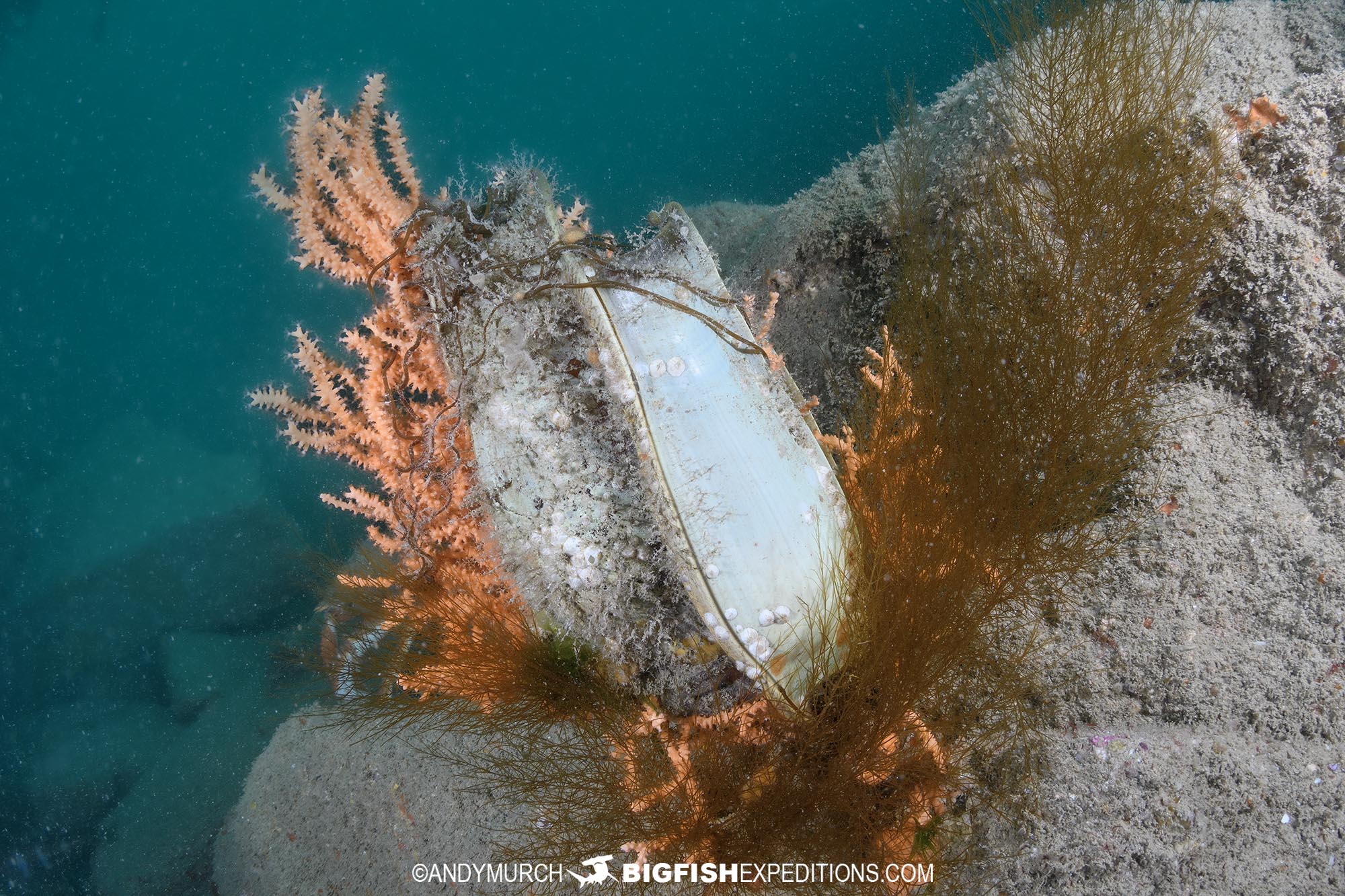
Unusual Social Behavior
On our second porbeagle run, we attracted four sharks. Two showed up at the same time and the researchers told us that these two often travel together.
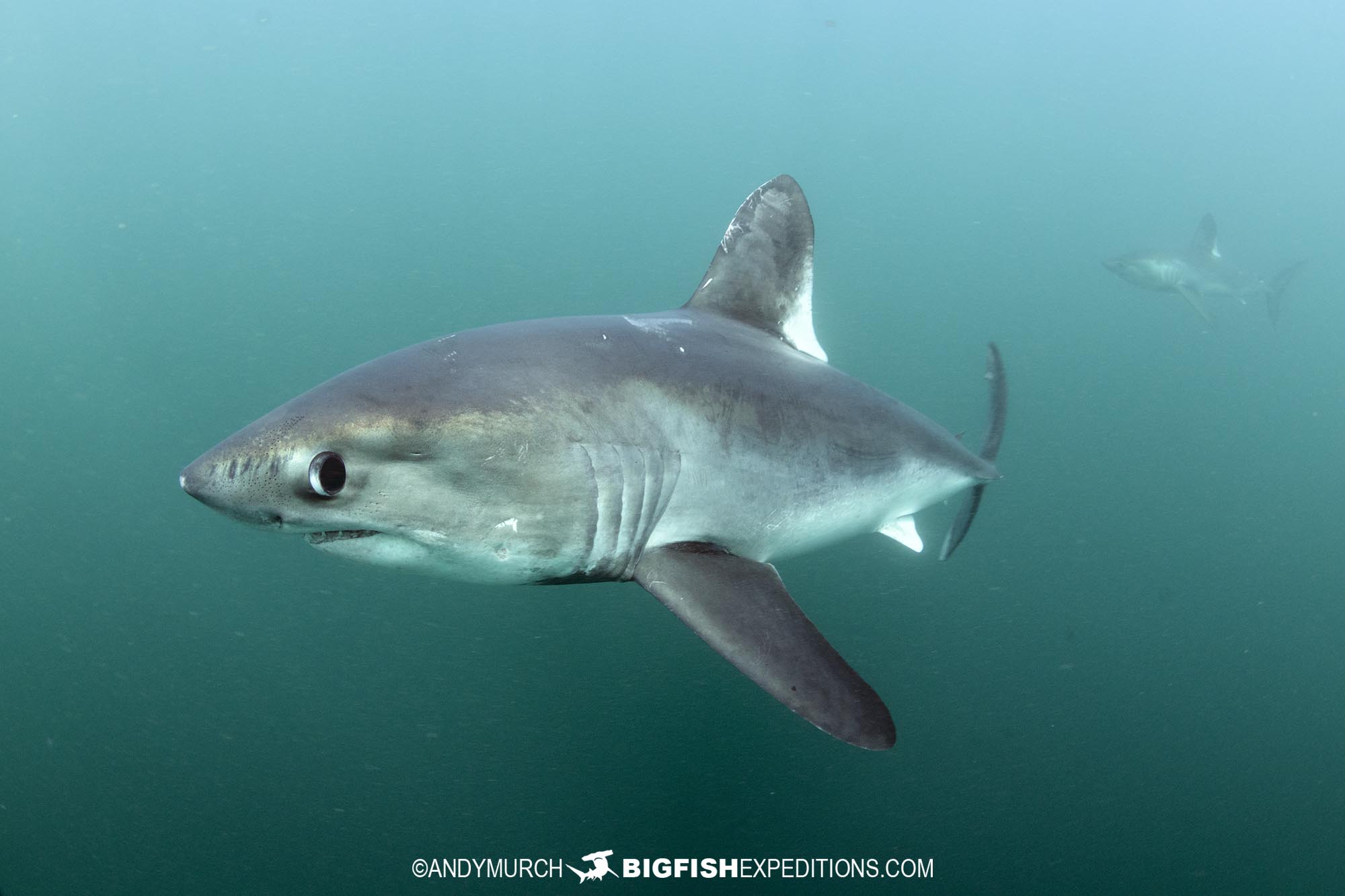
Snorkeling with seals
In the afternoon we visited a grey seal colony. One cute little pup spent an hour playing with us.
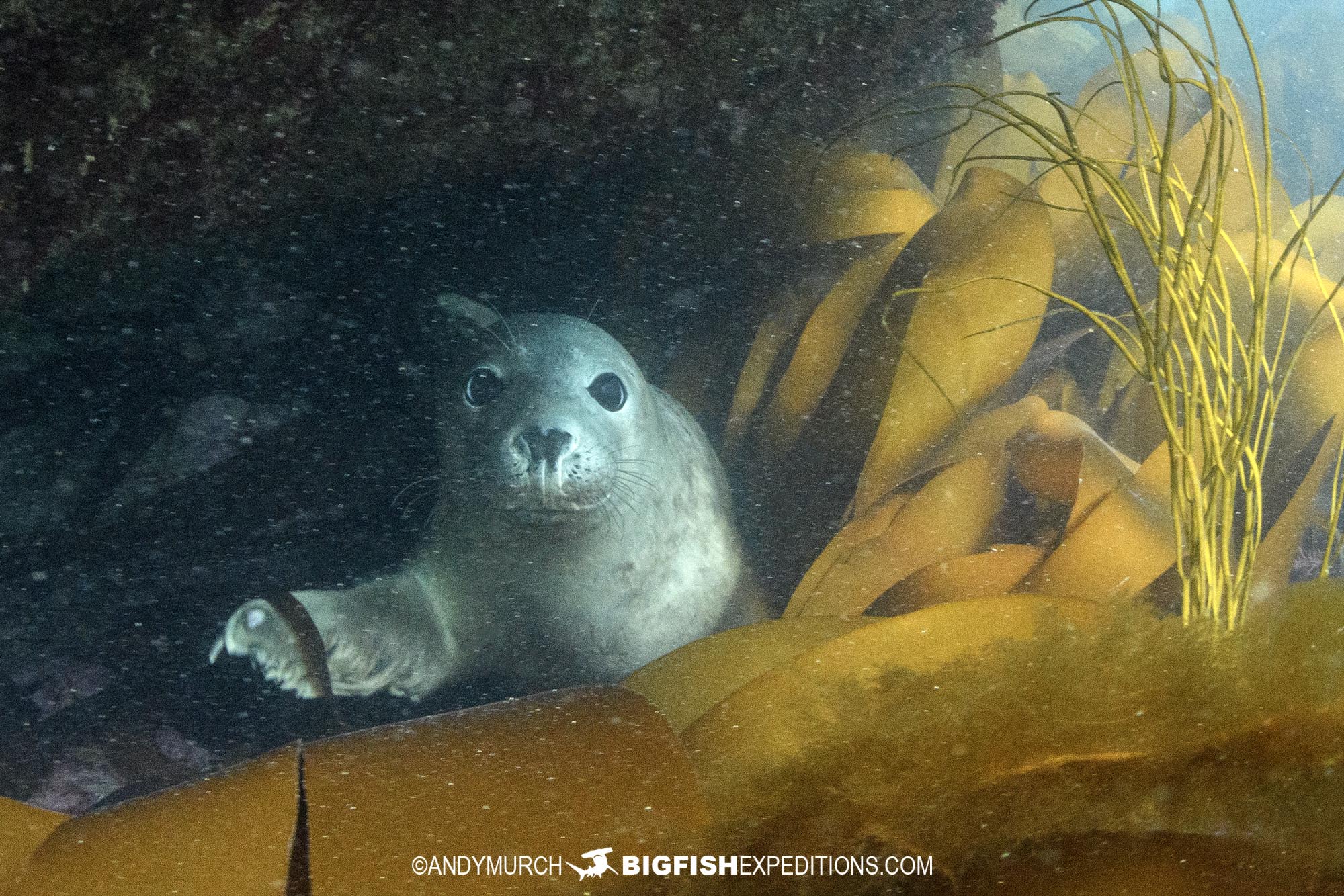
Porbeagle Research
The next day we saw three porbeagles. Each day we saw at least one shark that was tagged just below its dorsal fin. Most of the tags are from local studies but the researchers told that one shark had a tag from North America, proving that there is some crossover between the porbeagle shark populations on both sides of the Atlantic. It is still unclear how often the sharks migrate back and forth.
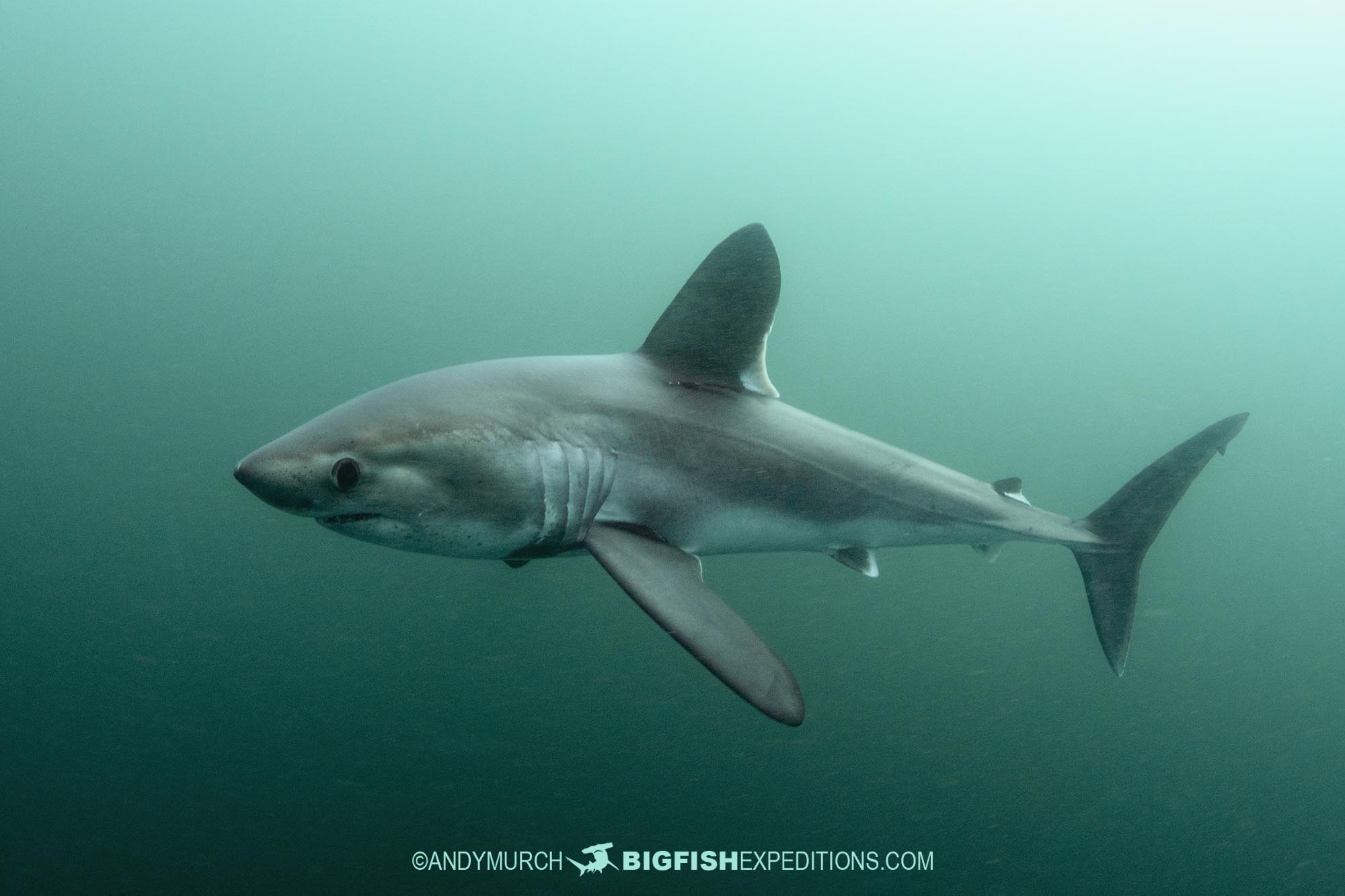
Shocking Ray Encounters
On our next cat shark dive, we went to a beautiful spot with lush kelp beds above a sandy substrate where we ran into three marbled torpedo rays. These dinner plate sized rays can deliver a painful electric shock, but they are not usually aggressive towards divers.
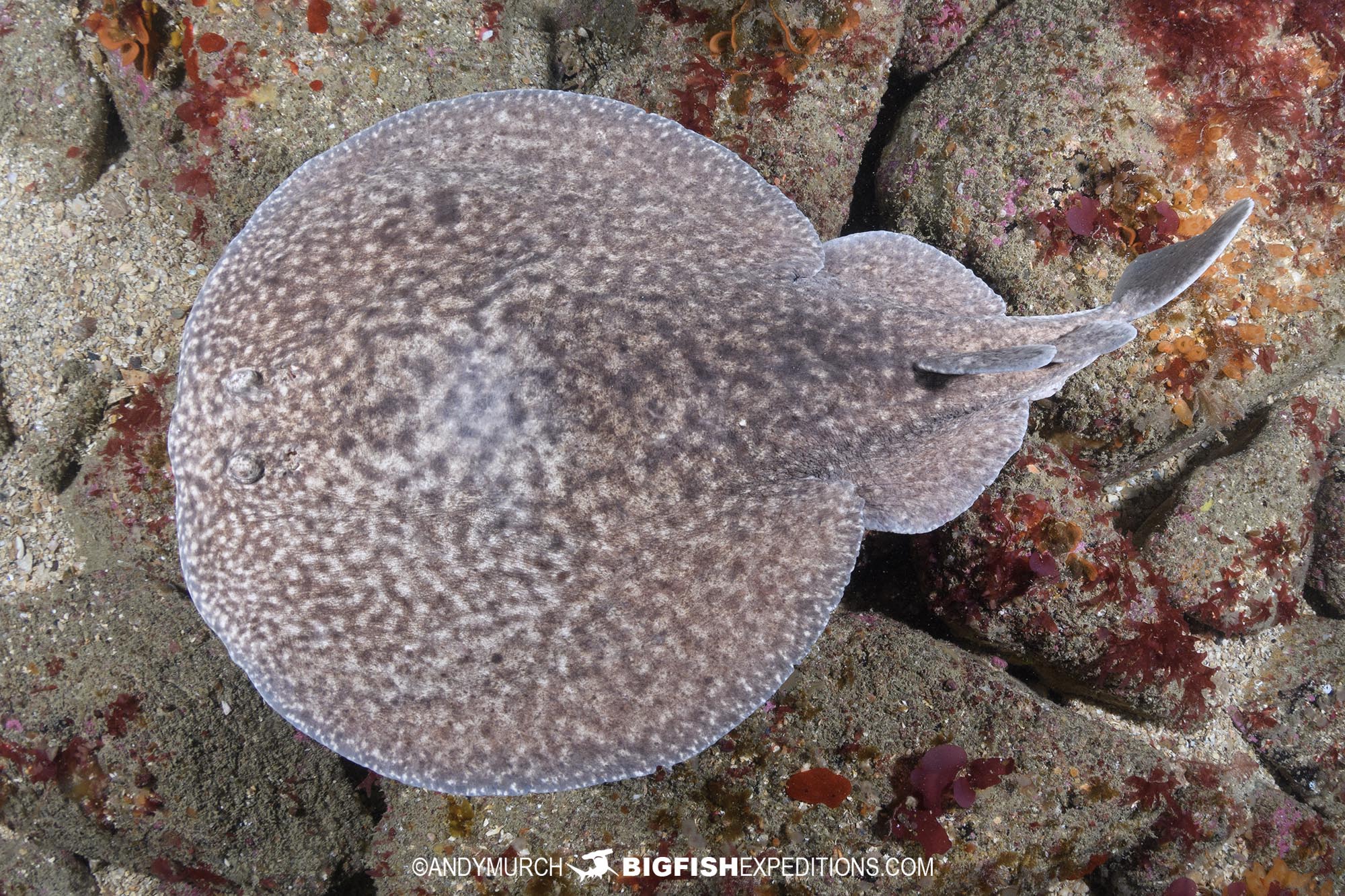
Bolder than average Lamnids
Day four of porbeagles we saw another three sharks. Genetically and morphologically, porbeagles are very similar to Salmon Sharks that we see in Alaska, but porbeagles seem to be far bolder around snorkelers, at least in this area.
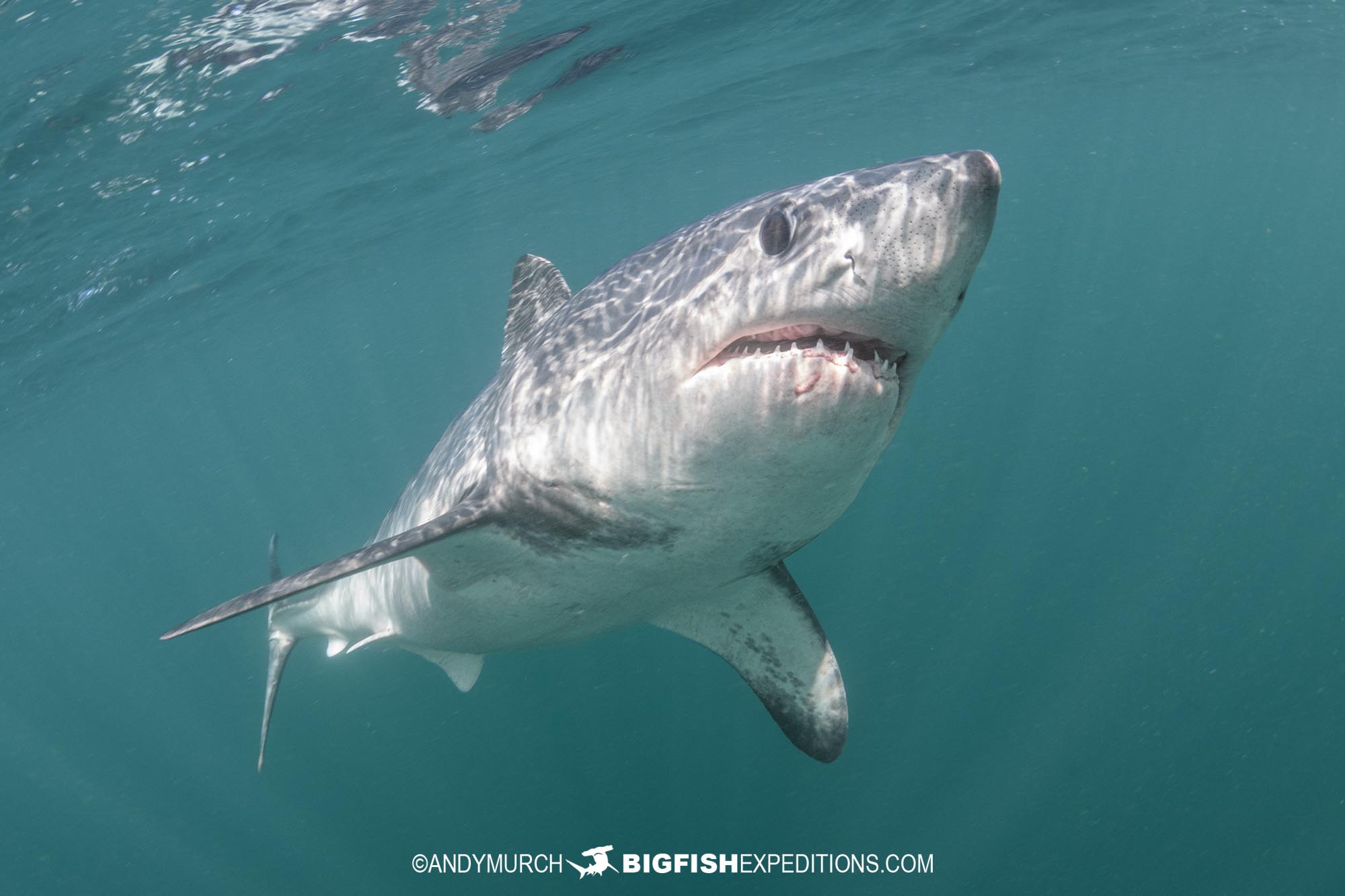
Local Marinelife
Besides catsharks and torpedo rays, there were plenty of other marine animals to photograph. Big spider/sheep crabs were everywhere, plus conger eels, spiny lobsters, blue clawed lobsters, and lots of fish.
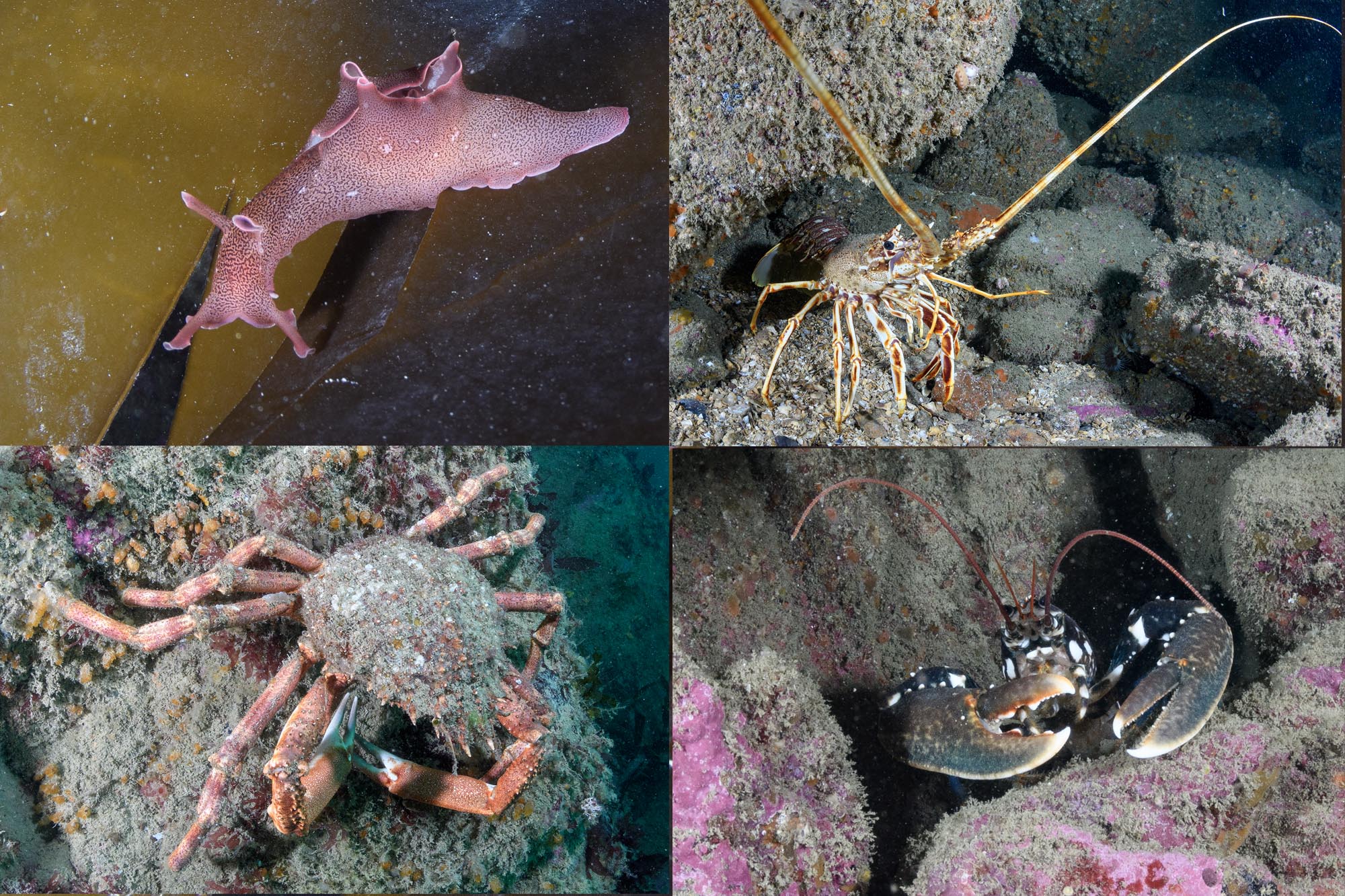
Porbeagle Photo Database
On our last day we only saw two Porbeagles, but they showed up within a few minutes. Some of the sharks we saw each day were repeats and others were new. At the end of the trip, we all contributed images and video footage to the researchers to help them ID individual animals. They have identified more than 100 sharks, many of which they have seen on multiple years.
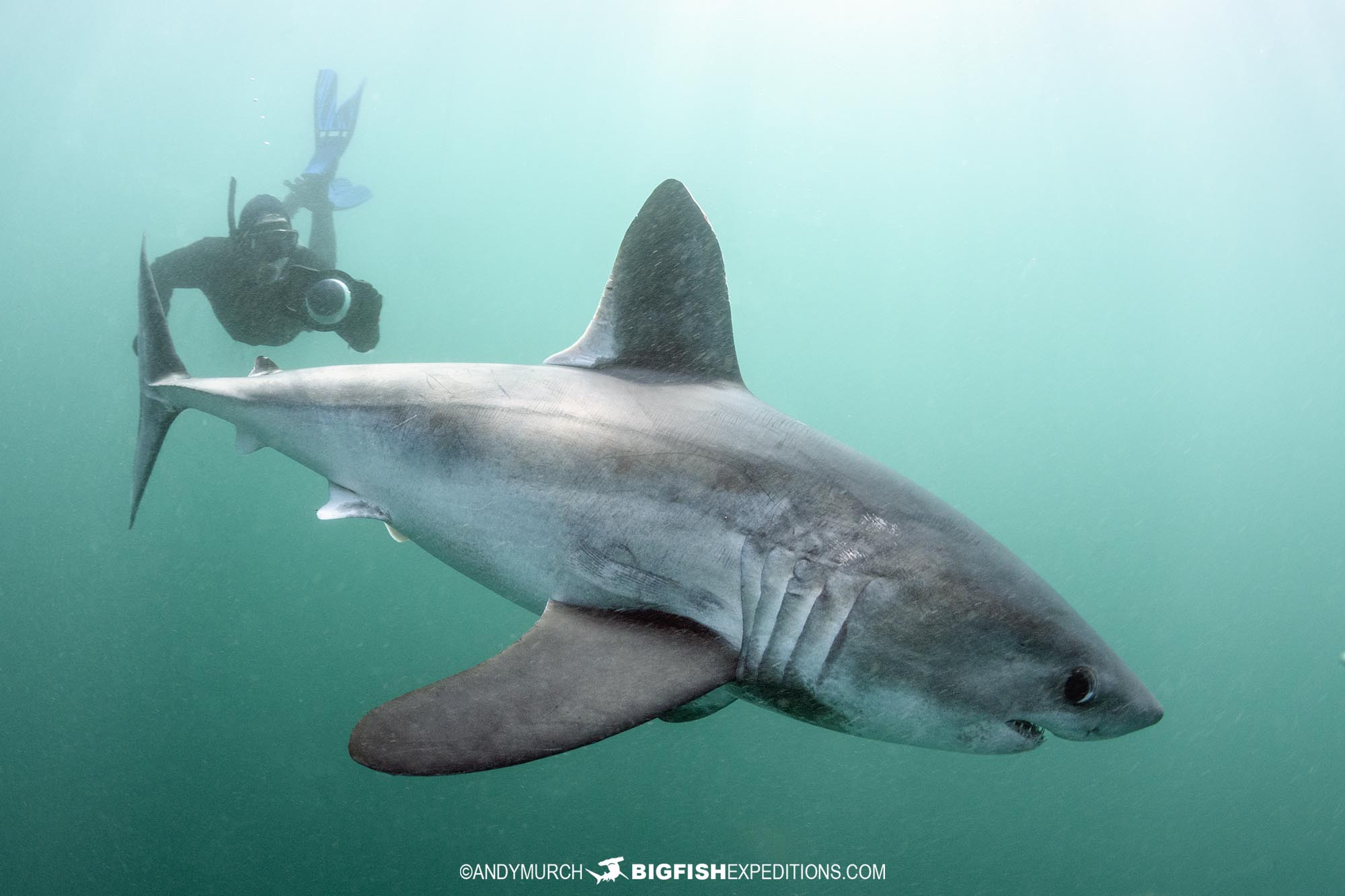
Smallspotted Catshark
On our final reef dive, I got some nice images of a smallspotted catshark. I have photographed many on trips to the UK, but it is always nice to see them (and good to get some shots) in a new location.
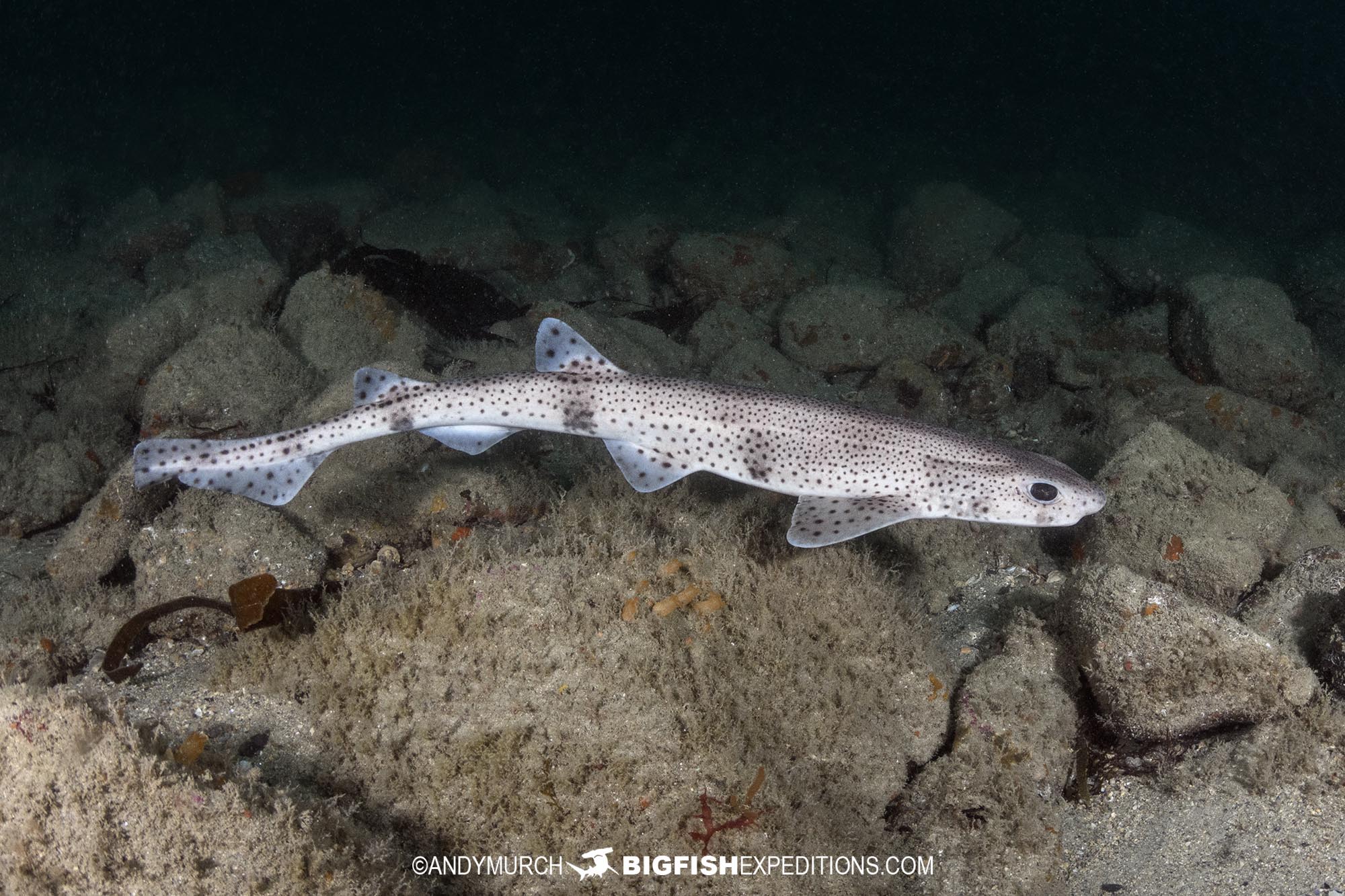
2024 Porbeagle Shark Diving Expedition
All in all, it was an exceptionally good trip! The weather was amazing all week long, which we were told is unusual for Brittany. The shark encounters were fantastic, and our small group of avid shark enthusiasts made the trip really fun.
Next year we will return for another week of porbeagle encounters, so If you are keen to photograph a rare apex predator that few divers get to see, this is your chance: 2024 Porbeagle Shark Diving Expedition
